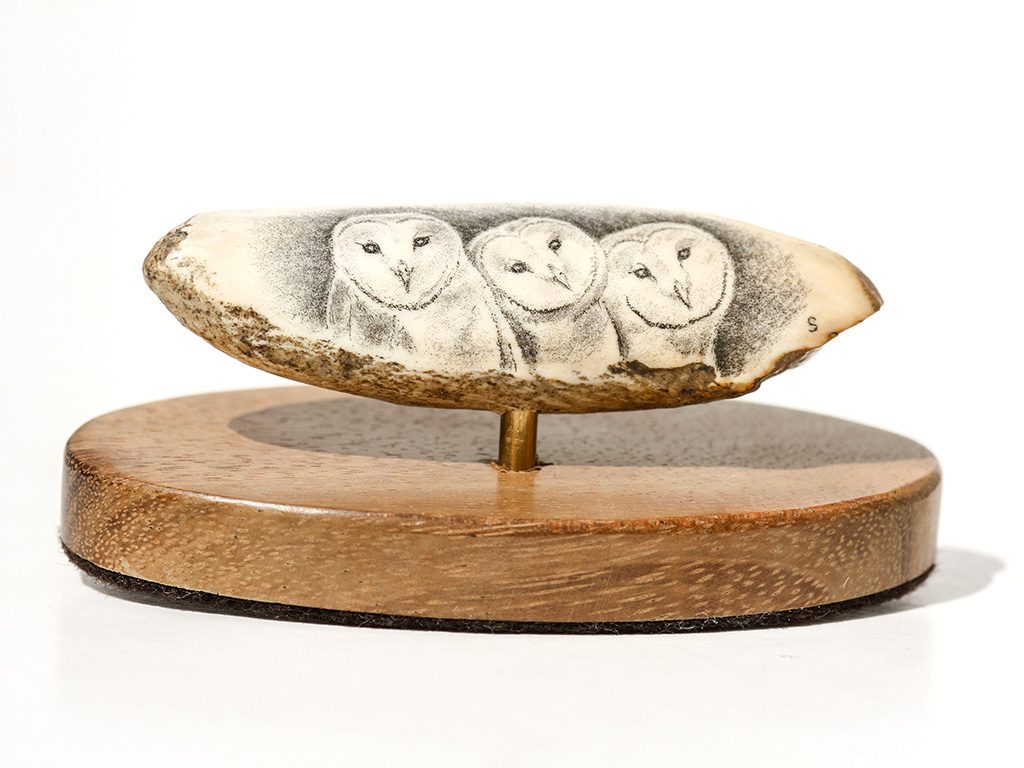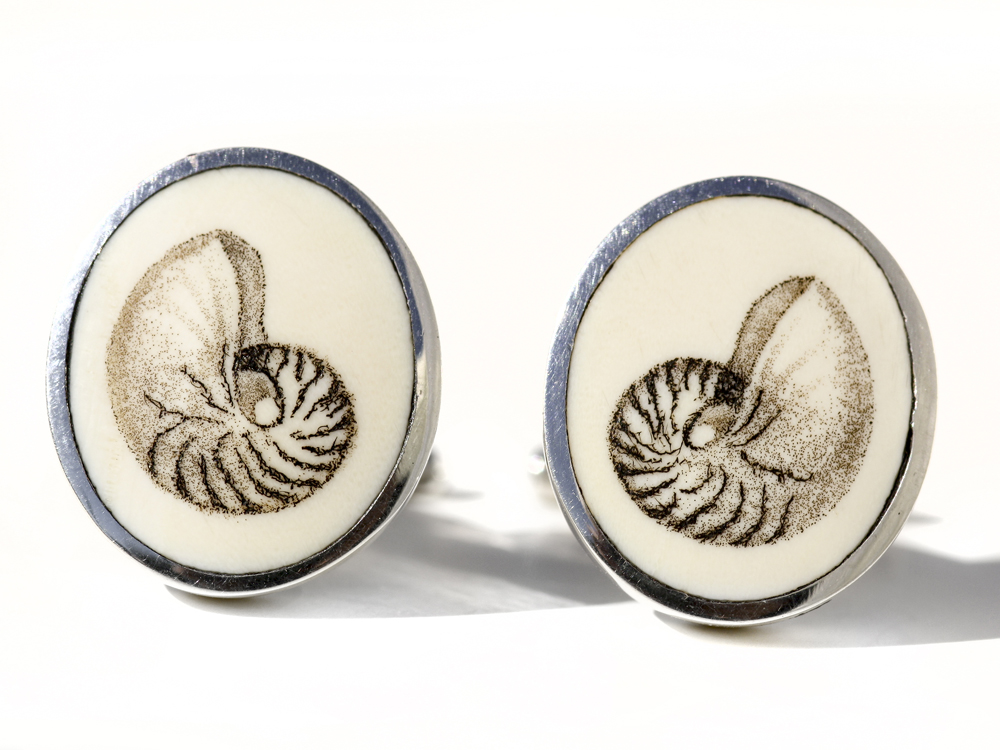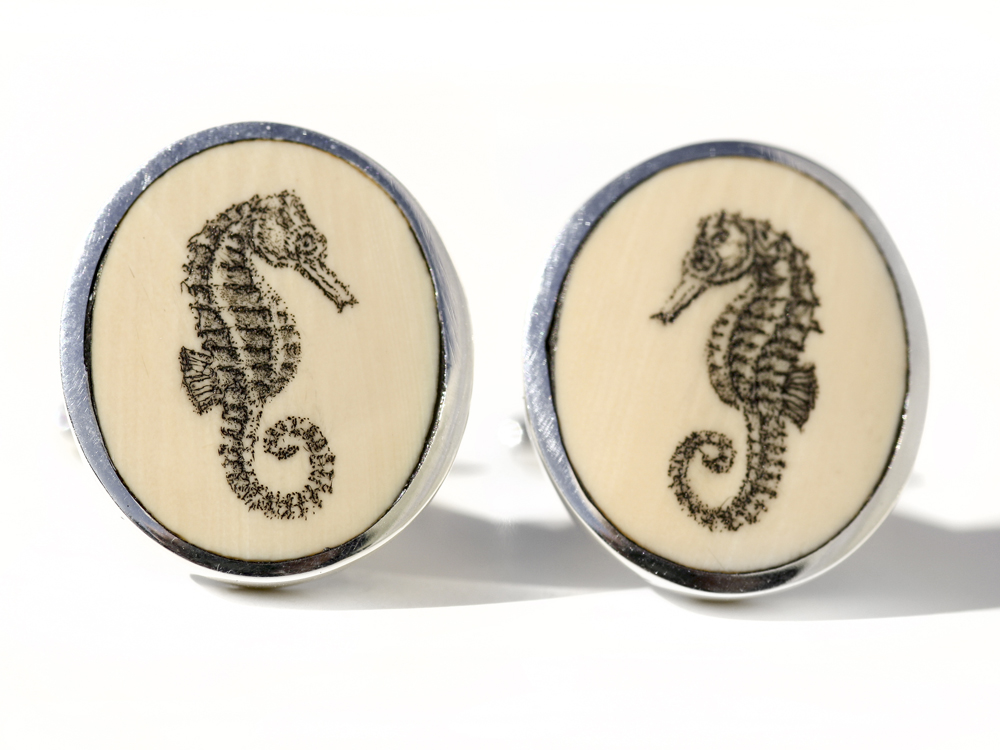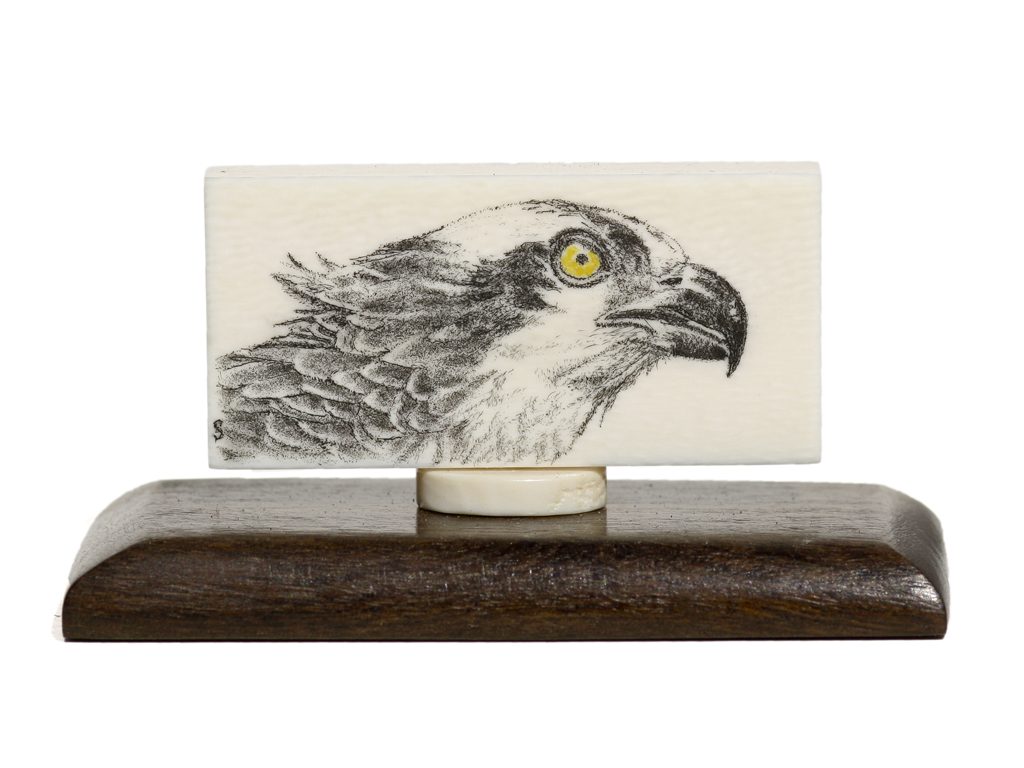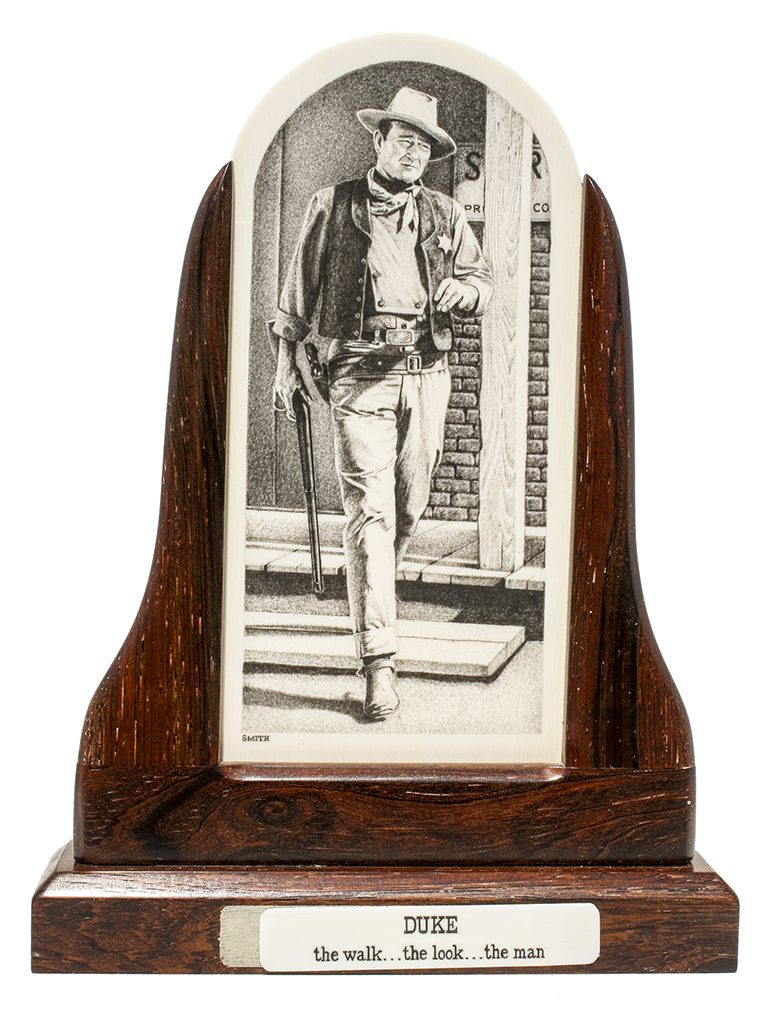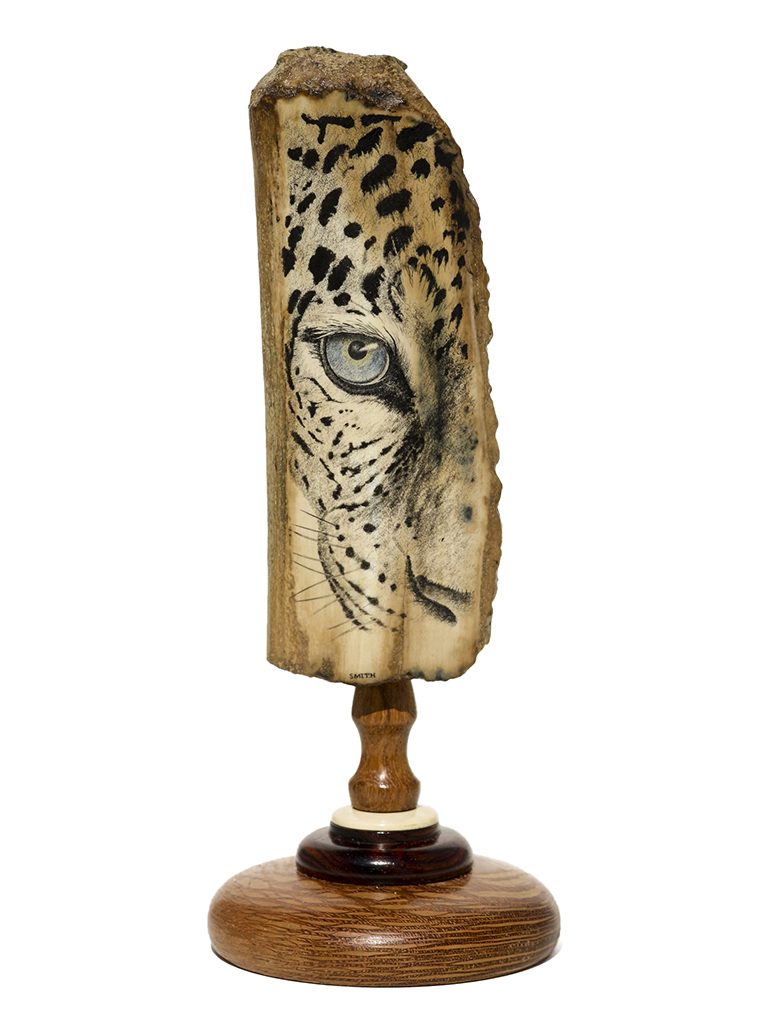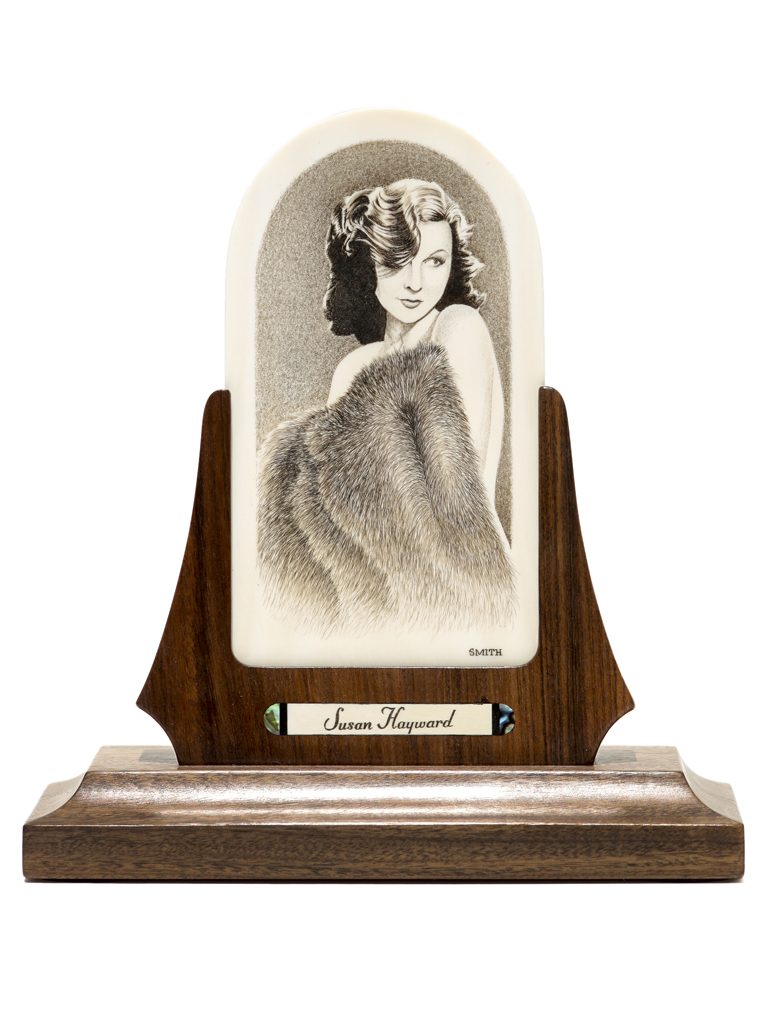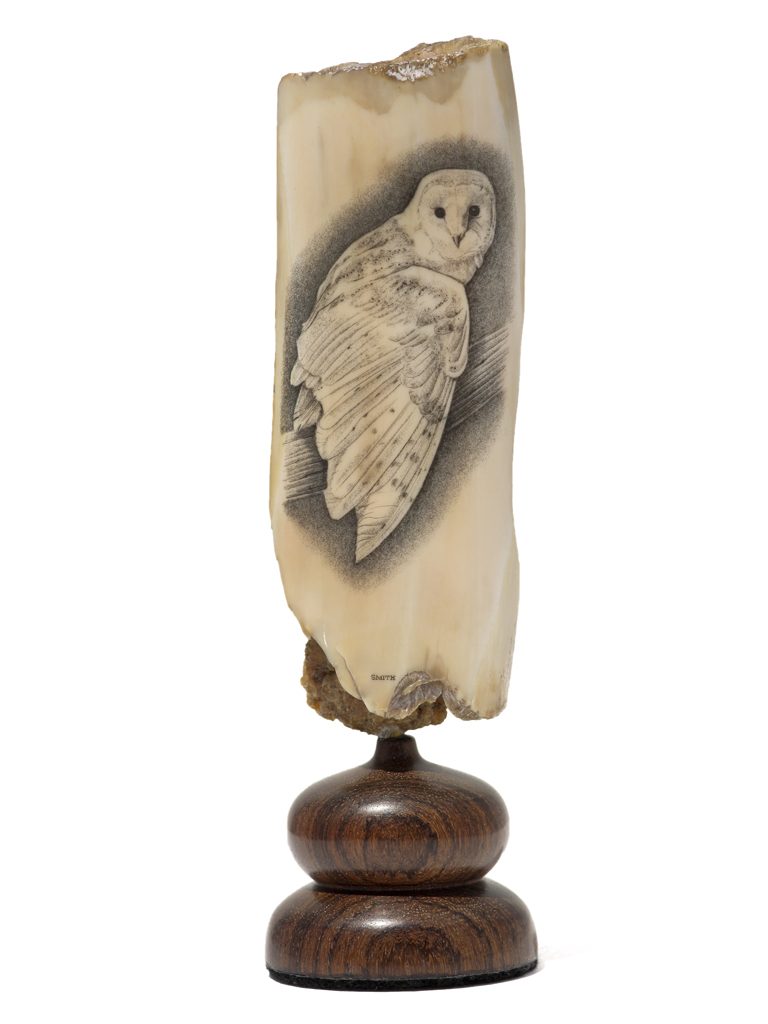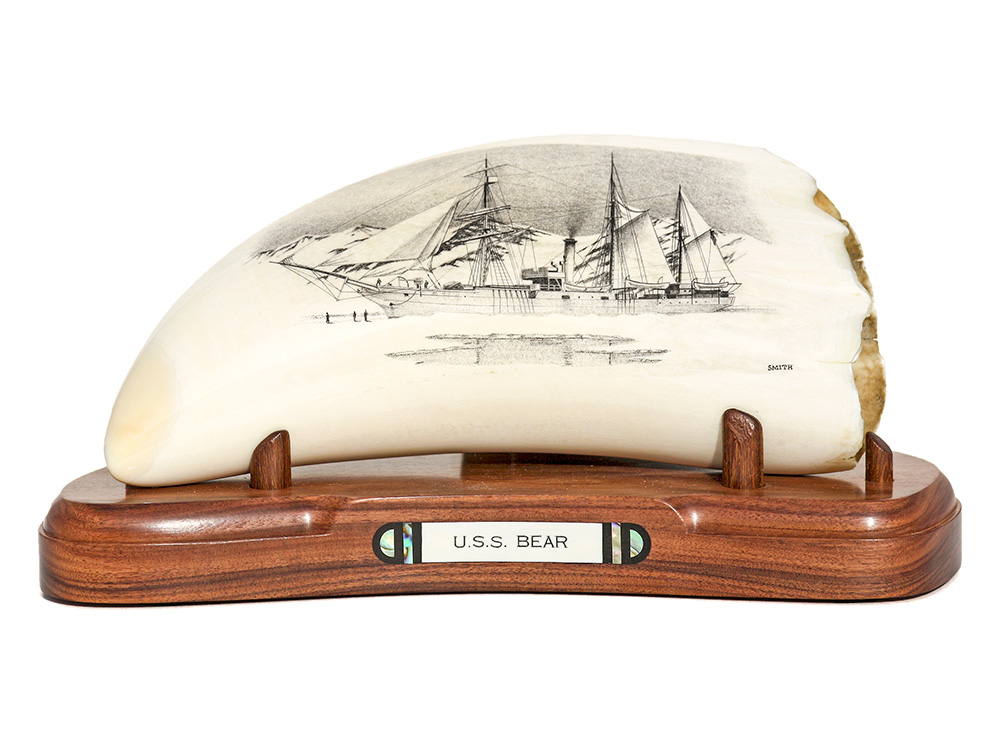Black and white scrimshaw on huge bull sperm whale’s tooth by David Smith. No one makes better use of the time consuming stipple style of scrimshaw than Smith. The U.S.S. Bear is one of the most famous vessels in U.S. naval history. You have to take a few minutes to read the attachment at the bottom. Too long to include it here. The scrimshander has truly conveyed the feeling of cold and remoteness in the beautiful creation. By the way, this is a huge sperm whale’s tooth that weighs 1 pound, 6.8 oz.! Not many this size around anymore.
Taken from the internet:
The United States Revenue Cutter Bear was originally constructed as a sealer. She was built by Alexander Stephen & Son in their Dundee Shipyard (Yard No. 56) on the east coast of Scotland. She was completed in 1874 and delivered to W. Grieve of Greenock, Scotland. She spent the first ten years of her life getting her sea legs with a sealing fleet operating off Newfoundland. World-wide fame came to the Bear in the early 1880s shortly after the historic Greely Expedition to the Arctic came to a disastrous end. The Expedition, under the command of the then First Lieutenant Adolphus Washington Greely, U.S. Army, was one of two groups dispatched to the Arctic to set up a series of observation stations. Despite elaborately made plans, a series of misfortunes left Greely and his party stranded in the pitiless Arctic winter without adequate food and clothing.
To assist the Greely party, the United States Navy organized a rescue fleet of three ships, consisting of the USS Bear, USS Thetis and the USS Alert. On 22 June 1884, less than two months after her departure, the Bear sighted the pitiful remnants of the expedition. For months they had been surviving on rock moss, leather sledding equipment, and whatever small game they could find. Many of the group had either died or gone mad from privation. Those who had survived resembled skeletons. The surgeon accompanying the expedition had committed suicide.
For a while it looked as though the Bear’s career was over. Not long after her return from the Greely rescue, she was declared unfit for further service by the Navy. Then in 1885, she was transferred to the Treasury Department for use in Alaskan waters and the Arctic Ocean. That was the beginning of a 41-year career on the Alaskan Patrol which has yet to be surpassed.
Her first skipper was Captain A. A. Fengar but in 1885 the colorful “Hell Roaring”‘ Mike Healy, a dynamo of a man with an unpredictable temper, assumed command. Healy was a good skipper, and he commanded the Bear for more than nine years, longer than any other. He had another distinction as well: he was the first African-American to command a U.S. Government vessel. In time, Healy and his ship became legend in the lusty, brawling Territory of Alaska.
The Bear’s duties on the Alaskan Patrol were many. She carried mail which had accumulated at Seattle during the winter, as well as Government agents and supplies. On her trip south from Alaska, she transported Federal prisoners and other questionable characters whose presence in Alaska ‘was undesirable. The deck of the Bear often served as a court where justice was dispensed swiftly but fairly. The Bear also conducted investigations, undertook crime prevention and law enforcement. She and other cutters like her were often the only law in that turbulent part of the world. The Bear also conducted soundings to improve charts of Alaskan waters, and her surgeon furnished medical attention and surgery to natives, prospectors, missionaries, and whalers. These duties are still part of today’s Bering Sea Patrol.
Not the least of Healy’s s accomplishments was the importation of reindeer from Siberia to provide food for the natives who were never free of the threat of famine. As Healy reasoned it, the reindeer would also be an excellent source of clothing and transportation. The wisdom of this measure was dramatically proved a few years later during the famous overland trek to save marooned whalers near Point Barrow, Alaska.
Of all the Bear’s exploits, none has captured the public imagination more than her Overland Rescue of 1897. It was in the fall of that year that Captain Francis Tuttle, the Bear’s new commander, learned that eight whaling vessels and their crews, totaling about 275 men, were trapped in the ice pack off remote Point Barrow, Alaska. The Bear had only recently returned from her patrol duties, but at the order of the Secretary of the Treasury, she prepared to go to the rescue. This was the first time that an Arctic voyage was attempted during the winter season.
By 14 December 1897, it was clear that the Bear had come as far north as she could go. Approximately 85 miles off Cape Nome, the ice was so thick that she was forced to turn back. But before she returned, the Bear landed an over-land party on Nelson Island, near Cape Vancouver. It consisted of’ First Lieutenant D. H. Jarvis, Second Lieutenant B. P. Bertholf, and Surgeon S. J. Call, all of the Revenue Cutter Service. Equipped with dog teams, sleds, and guides, Jarvis and his companions set out for Point Barrow. Before them lay a 1,600 mile journey through frozen, trackless wilderness. But the “Overland Expedition for the Relief of the Whalers in the Arctic Ocean” as it was ponderously called, became one of the great epics of the north.
During the exhausting journey, Jarvis and Call collected a herd of nearly 450 reindeer. Driving the herd ahead of them in the face of icy winds the party reached Point Barrow about three and one-half months after being put ashore by the Bear. To the despairing whalers, the arrival of the relief party was nothing short of a miracle. Healy’s foresight had paid off.
The Bear, which had been in service since 1885 was still around in 1917 when the United States entered World War I. For the duration of the war she served under the U. S. Navy. This, however, did not change her routine patrol of Alaskan waters. In 1929 the Bear was decommissioned and turned over to the city of Oakland, California, for use as a maritime museum. It was at this time that she served as the set for the filming of Jack London’s “Sea Wolf”.
Notice:
This scrimshaw is done on a sperm whale’s tooth. Federal legislation bans the interstate shipment of whale ivory. It can only be shipped intrastate (within the state). All of our whale ivory is located with our associate in the state of Florida. It can be purchased directly from our website and shipped only to an address within the state of Florida. If one has a relative, trusted friend or business associate within the state of Florida, we can ship to that specified address in order to comply with Federal legislation. The scrimshaw can then be forwarded to you and everyone complies with the law. Any questions, email or call us.

